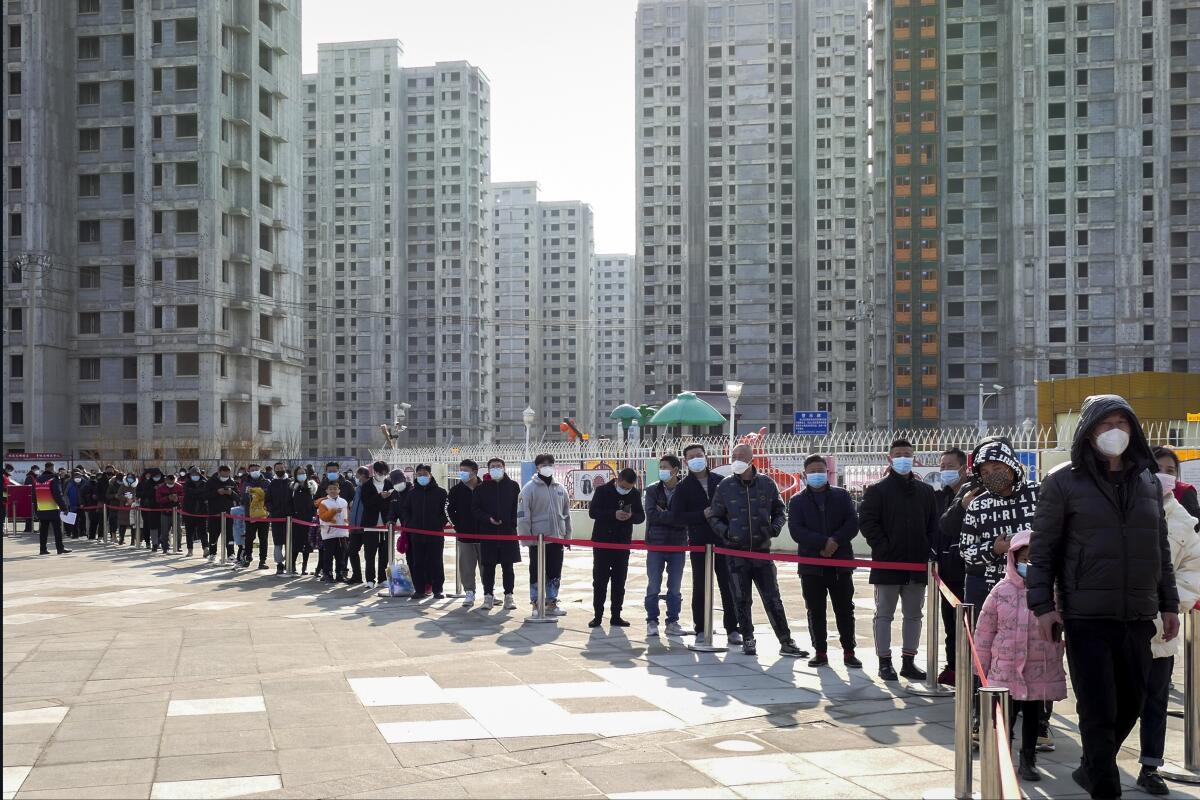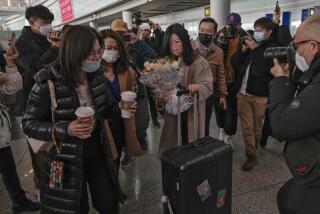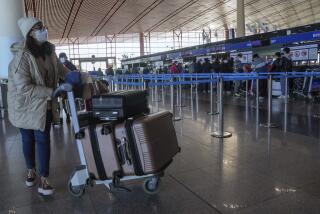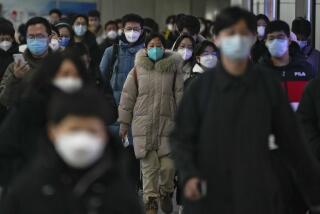China’s Tianjin testing all residents after Omicron found

- Share via
BEIJING — The numbers are small, but the major port of Tianjin may be facing China’s first outbreak of Omicron of any size, less than four weeks before the Winter Olympics open in nearby Beijing.
The city began mass testing of its 14 million residents Sunday after a cluster of 20 children and adults tested positive for the coronavirus, including at least two with the Omicron variant. Officials said the virus has been circulating so the number of cases could grow.
China has stepped up its strict zero tolerance strategy in the run-up to the Olympics, which open Feb. 4. The Chinese capital is 70 miles northwest of Tianjin and many people regularly travel back and forth by car or on a high-speed rail link that takes less than one hour.
Elsewhere, millions of people are being confined to their homes in Xi’an and Yuzhou, two cities that are farther away but have larger outbreaks. Both have been traced to the Delta variant. The outbreak in Yuzhou is also affecting Zhengzhou, the Henan provincial capital 40 miles to the north. Zhengzhou has been conducting mass testing and is closing schools starting Monday.
The first two cases confirmed in Tianjin were a 10-year-old girl and a 29-year-old woman working at the after-school center. Both were infected by the Omicron variant. In subsequent testing of close contacts, 18 others tested positive and 767 tested negative as of Saturday night.
Those infected include 15 students from 8 to 13 years old, the after-school center staff member and four parents. The citywide testing is to be completed over two days. Tianjin has also closed some subway stations on two lines to try to prevent further spread.
China had reported about a dozen Omicron cases previously, most among people who had arrived from abroad and were isolated. In one case in mid-December, the infection was not detected until after the person had completed two weeks of quarantine, and it spread to a few close contacts in the southern city of Guangzhou.
More to Read
Sign up for Essential California
The most important California stories and recommendations in your inbox every morning.
You may occasionally receive promotional content from the Los Angeles Times.










